pncExcel
Prime Number Cross Tool
An Excel tool for exploring prime numbers in general and the Prime Number Cross in particular.
The Prime Number Cross appears when numbers are arranged in concentical circles forming a "wheel". When the wheel consists of a specific number of spokes, certain spokes, and only those spokes, contain the prime numbers. Se image below where the spokes containing prime numbers (marked red) forms a "cross". The wheel is sligthly flattened which fits well to the computer screen and when printing to landscape paper orientation.

What does pncExcel do?
pncExcel will arrange the spokes as columns and the circles as rows in an Excel sheet. With this arrangement you can explore where, and if, prime number spokes appears with different numbers of spokes. Among other things that can be marked and explored with pncExcel are; different number bases, statistics for columns or rows, powers of 2, 3 and primes, primes in format Xn+1 and Xn-1 where X is 4 or 6, prime factors, Fibonacci numbers and the music of the primes. There is also a function that reduce the numbers to one digit.
Description
pncExcel is coded in Visual Basic for Applications (VBA) and MS Excel 2016-2021 for Windows must be present. Later versions of Excel will probably work but have not been tested. There is no demo version or any limitiations but the VBA code is locked and cannot be viewed or edited.
The PNC
The prime numbers appear in certain spokes. The PNC function will generate a graphic – the PNC – on a blank Excel sheet according to the number of spokes and circles assigned.
The PNC as an Excel sheet
The numbers can also be set on an ordinary Excel sheet with cells. The columns in this sheet corresponds to the spokes and the rows corresponds to the circles.
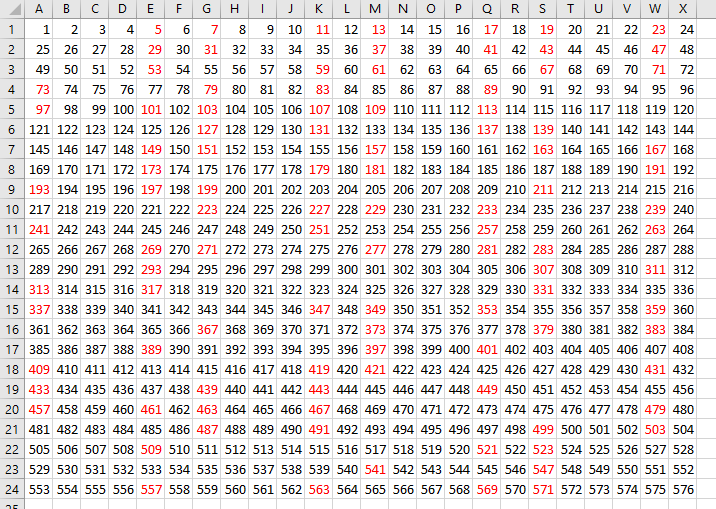
Marking the spokes and primes
The prime number spokes can be marked, with or without other columns visible. Cells containing the primes can also be marked, with or without other numbers visible.
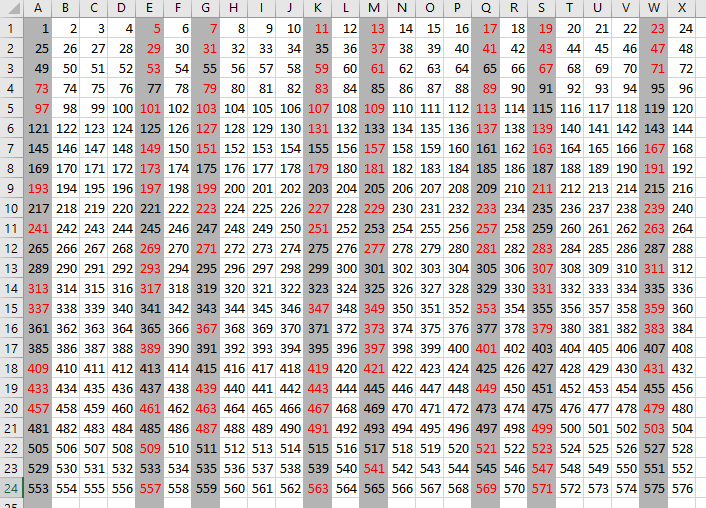
Formatting
Formatting can be applied to cells and numbers. Cell width and height, justification, font size, bold font and font color can be set.
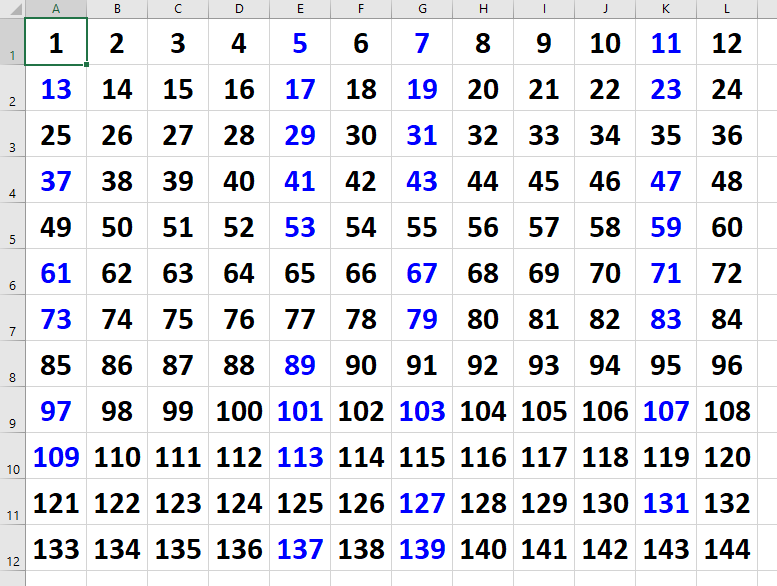
Marking
Marking of different items is possible. Here powers of 2, powers of 3, prime powers and the Fibonacci series are marked. Note that start number in this example is set to 125.
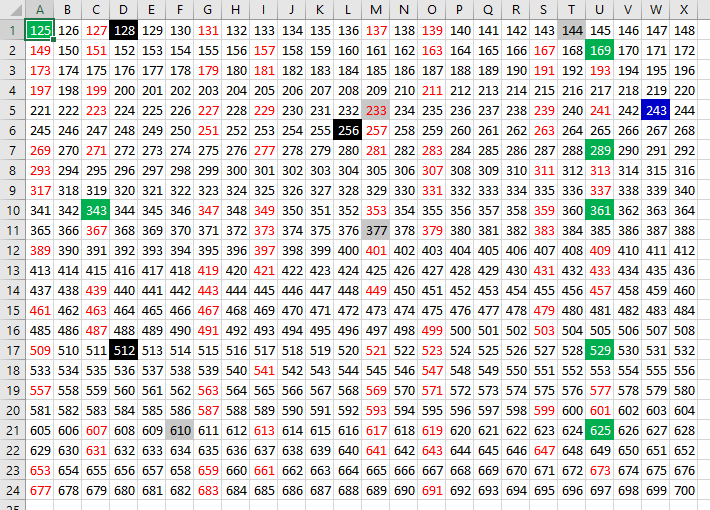
Statistics
Vertical:
Statistics for each prime number column is shown on top of the sheet. The rows show from
top and down: Number or primes om spoke, % primes in spoke, sum of all numbers in spoke, sum of primes in spoke,
primes sum % in spoke and number of primes with certain end digit.
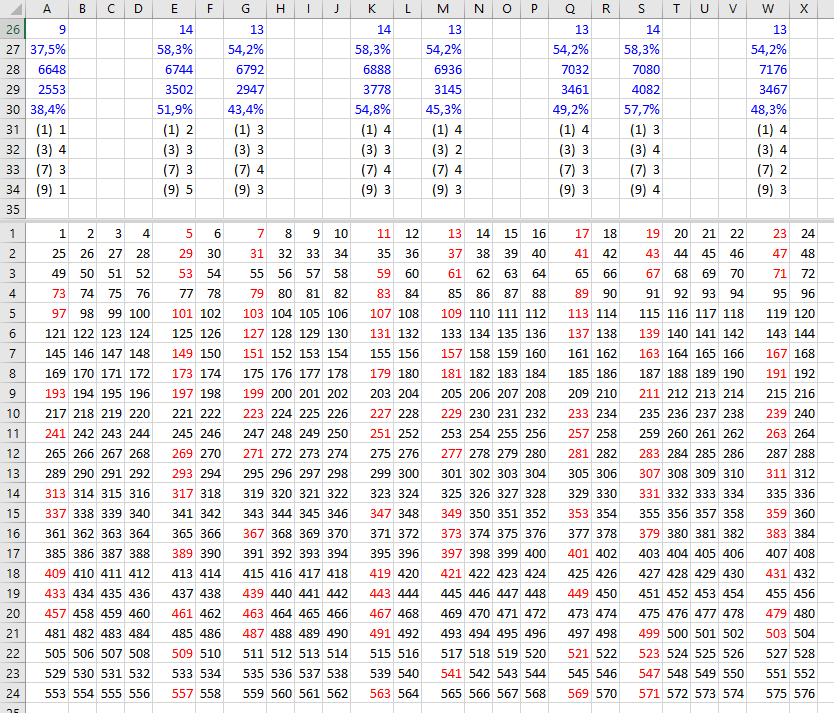
Horizontal:
Statistics for each circle (row) is shown to the left in the sheet. The columns
show from left to right: Number of primes in row, sum of primes in row and sum of all number in row.
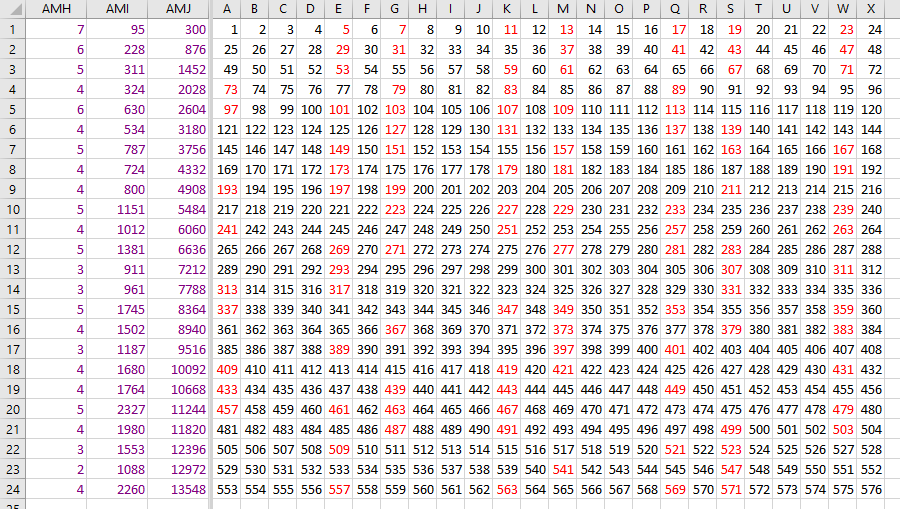
Xn±1
Xn±1 can be marked where X=6 or X=4. In this example X=6, blue background marks 6n+1 and red background marks 6n-1.
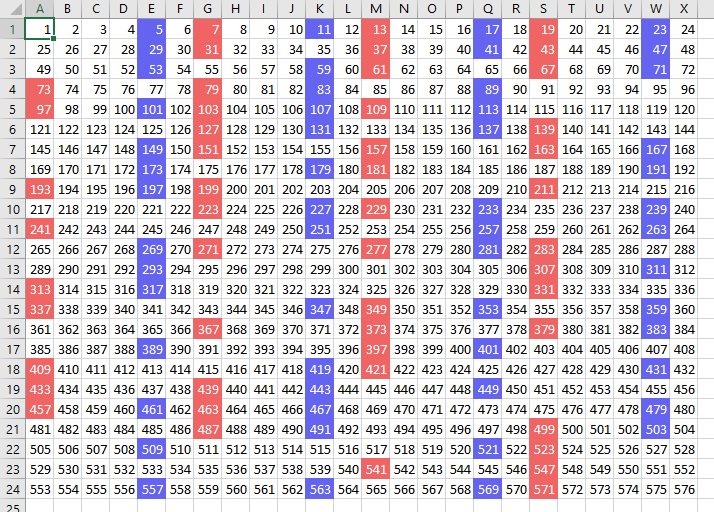
Prime Factors
This function checks numbers for two prime factors and if found shows factors in cell with colors according to 6n±1. Note that in this example the start number is quite high.
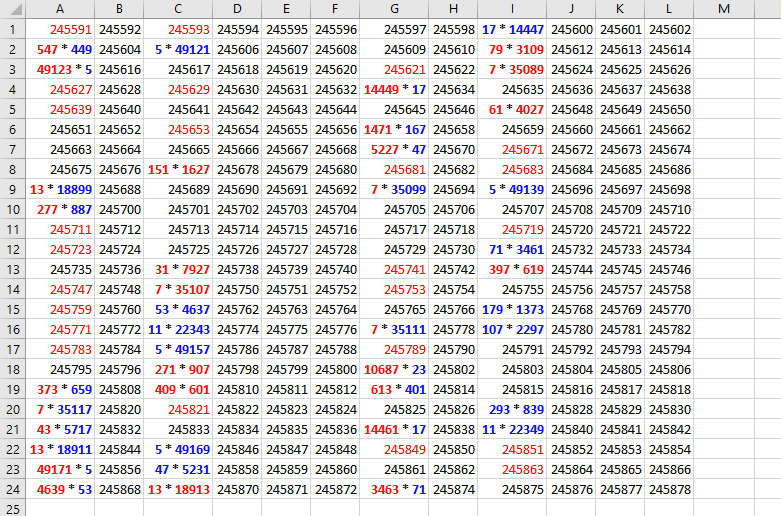
Reduce numbers
This function reduces numbers to one digit by successively adding the numbers digits until one digit remains. This example starts at the number 1. Note that the prime numbers still are marked.
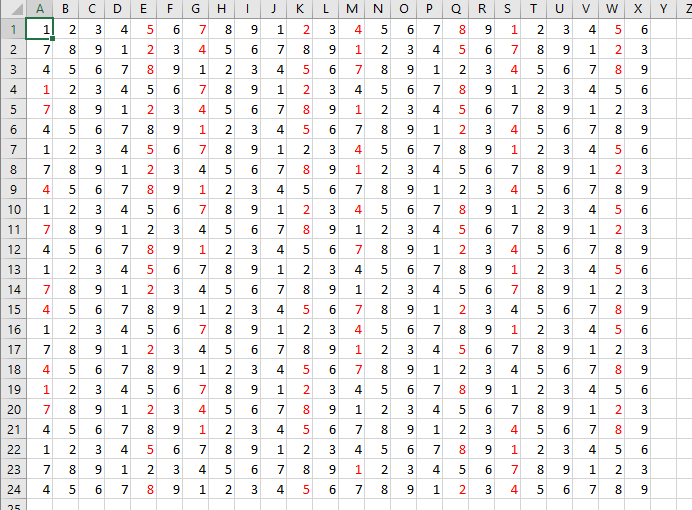
More info
All functions and parameters are accessed in six tabs on the input form: Numbers, Layout, Functions, PNC, Play and Misc. For info about each of the tabs, click the green links in the top menu.